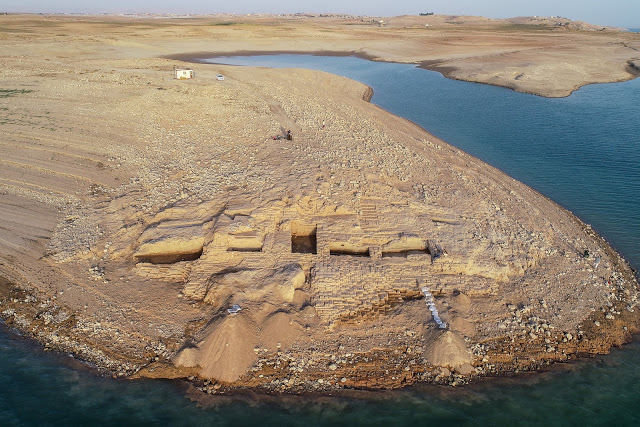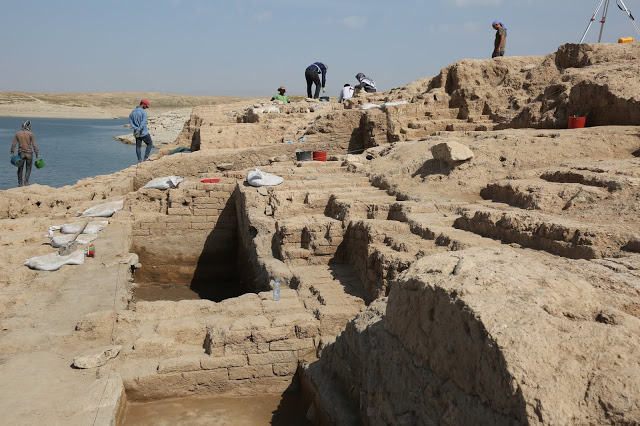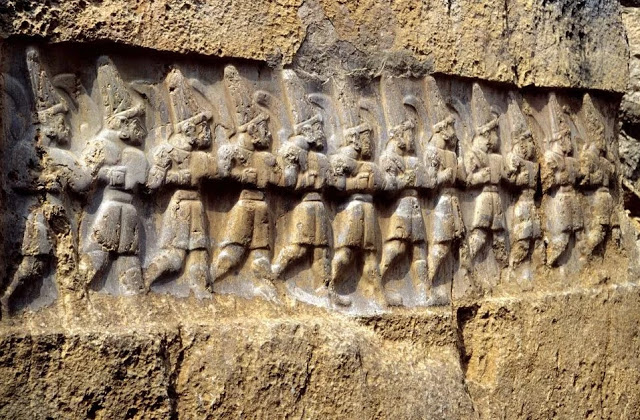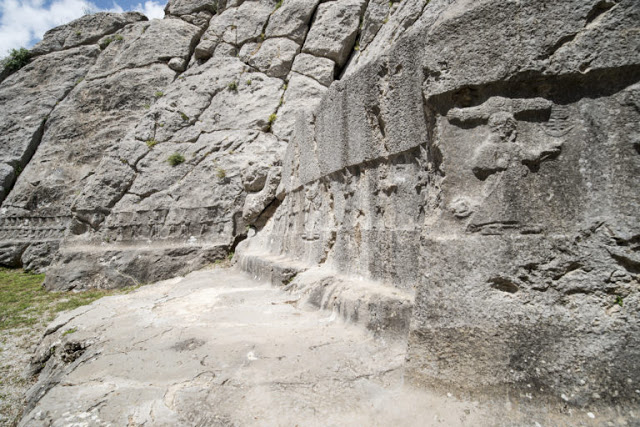German and Kurdish archaeologists have uncovered a Bronze Age palace complex within the ruins of a mud brick city that once thrived on the banks of the river Tigris in what is now Kurdistan (on the Iraq side). It dates back to the time of the empire of Mitanni, a little known kingdom that thrived for several hundred years in the LB age. It is normally dated to the 15th and 14th centuries BC and controlled a large part of northern Mesopotamia. The ruling class were Indic aryan speakers it is thought, with an origin on the steppes. It was the contemporary of dynasty 18 Egypt. Cuneiform tablets were found in the short excavation but as yet are not translated. Last autumn, we are told, receding waters of the Mosul Dam reservoir, unexpectedly brought the palace to light (and a large part of the former city). Archaeologist launched a spontaneous rescue excavation of the ruins …see https://archaeologynewsnetwork.blogspot.com/2019/06/archaeologists-uncov… …
 …
…  … The ruins are preserved to a height of 7m. It is thought it is the city of Zakhika which is mentioned in MB age sources (around 1800BC). Hence the city was in existence long before the kingdom of Mitanni and was occupied for at least 400 years – but probably somewhat longer. It is the Mitanni period that is of most interest at the moment as little is known of it or its line of succession.
… The ruins are preserved to a height of 7m. It is thought it is the city of Zakhika which is mentioned in MB age sources (around 1800BC). Hence the city was in existence long before the kingdom of Mitanni and was occupied for at least 400 years – but probably somewhat longer. It is the Mitanni period that is of most interest at the moment as little is known of it or its line of succession.
At https://archaeologynewsnetwork.blogspot.com/2019/06/intricate-carvings-a… … intricate carvings at Yazilikaya may have an astronomical or calendrical meaning according to Eberhard Zangger …
 …
…  … Yazilickaya is Turkish for 'inscribed wall' and refers to a large slab of limestone that has been carved with images of gods. Eberhard Zangger is a controversial researcher and archaeologist who has written several books, has his own web iste on the Luwians, a forgotten people of Anatolia, and likes to come out with new ideas that don't always go down well with mainstream academics who might be fuddy duddy and prone to stick to traditional points of view.
… Yazilickaya is Turkish for 'inscribed wall' and refers to a large slab of limestone that has been carved with images of gods. Eberhard Zangger is a controversial researcher and archaeologist who has written several books, has his own web iste on the Luwians, a forgotten people of Anatolia, and likes to come out with new ideas that don't always go down well with mainstream academics who might be fuddy duddy and prone to stick to traditional points of view.
At https://archaeologynewsnetwork.blogspot.com/2019/06/5000-year-old-astron… … astronomical markers going back to 3000BC have been discovered in central China. They appear to represent Ursa Major, the Big Dipper. This appears to indicate the roots of Chinese astronomy go back deep into the past.
